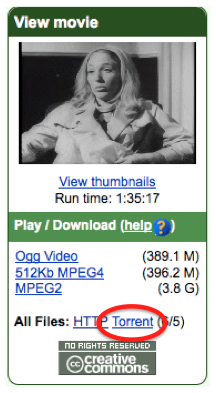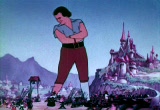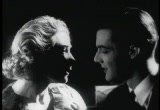Joomla #2?
Wednesday, November 28, 2012
Tuesday, November 27, 2012
Friday, November 16, 2012
Monday, November 12, 2012
Monday, November 5, 2012
Sunday, November 4, 2012
Friday, November 2, 2012
Thursday, November 1, 2012
Thursday, October 25, 2012
Monday, October 22, 2012
Wednesday, October 10, 2012
Friday, September 14, 2012
Wednesday, August 29, 2012
Monday, August 27, 2012
Sunday, August 19, 2012
Saturday, August 18, 2012
Friday, August 17, 2012
Tuesday, August 14, 2012
Over 1,000,000 Torrents of Downloadable Books, Music, and Movies | Internet Archive Blogs
The Internet Archive is now offering over 1,000,000 torrents including our live music concerts, the Prelinger movie collection, the librivox audio book collection, feature films, old time radio, lots and lots of books, and all new uploads from our patrons into Community collections (with more to follow).
To download the Torrent of the files in the item, click the Torrent link at the bottom of the download box; your Torrent client (such as transmission and uTorrent) can use the Torrent file you get to download the files in the Archive item, including the original item files, plus all derivative and metadata files. Individual files can be selected (or deselected) from the list within most BitTorrent clients, allowing Torrents to be used to retrieve an entire item or a specific subset of files within it.
BitTorrent is the now fastest way to download items from the Archive, because the BitTorrent client downloads simultaneously from two different Archive servers located in two different datacenters, and from other Archive users who have downloaded these Torrents already. The distributed nature of BitTorrent swarms and their ability to retrieve Torrents from local peers may be of particular value to patrons with slower access to the Archive, for example those outside the United States or inside institutions with slow connections.
To upload files to the Internet Archive, please use
http://archive.org/upload or http://archive.org/create.We are starting to track some BitTorrent statistics, which can be fun to watch.
“I supported the original creation of BitTorrent because I believe in building technology to make it easy for communities to share what they have. The Archive is helping people to understand that BitTorrent isn’t just for ephemeral or dodgy items that disappear from view in a short time. BitTorrent is a great way to get and share large files that are permanently available from libraries like the Internet Archive,” said John Gilmore, founder of the Electronic Frontier Foundation.
Thank you, BitTorrent community, for evolving such a valuable technology for the rapid,
reliable, and resilient distribution of large numbers of files! And to Aaron Ximm, here at the Internet Archive, for helping the Internet Archive’s patrons and, we hope, libraries and archives worldwide to distribute public materials quickly, efficiently, and inexpensively.
Press: BoingBoing GigaOm PCmagazine NBCNews iDigitalTimes BitTorrent TorrentFreak GHacks Reddit Slashdot theregister Gizmodo ComputerWorld
LEGAL BitTorrents?
Mars rover Curiosity will phone home via NASA's Deep Space Network -- Government Computer News

Since about the year 2000 Vint Cerf and others have been working on an Interplanetary Internet called the Deep Space Network. Read on:
Friday, July 27, 2012
dwpollock@gmail.com has shared: Cybersecurity Bill Inches Closer to Passing
| Keep an eye on this | |
 | Cybersecurity Bill Inches Closer to PassingSource: mashable.com The Cybersecurity Act of 2012 cleared a procedural hurdle in the U.S. Senate late Thursday afternoon. |
dwpollock@gmail.com sent this using ShareThis. Please note that ShareThis does not verify the ownership of this email address.
Wednesday, June 27, 2012
Monday, June 25, 2012
Saturday, June 23, 2012
Friday, June 22, 2012
Thursday, June 7, 2012
Wednesday, June 6, 2012
Tuesday, June 5, 2012
Monday, June 4, 2012
The Original Zeldman Guide for Web Designers Now Free to Read on the Web! - Forbes
Hilarious: Design is Serious, Tie-Wearing Business, Just Ask Book Coverist Chip Kidd
Anthony Wing Kosner Contributor
The art of modern web design began somewhere around the turn of the century and many designers and developers are still playing catch up. For a good dose of the foundation of the craft, or for an amusing trip on the wayback machine to 2001, have a look at the republished free web book edition of Jeffrey Zeldman‘s classic “Taking Your Talent to the Web.”
This project is a labor of love by Dale Cruse, who has taken Zeldman’s original content and represented it on the web using “the latest and greatest HTML5, CSS3, great looking fonts, and so much more.” Look at the source code, and see for yourself.
Or, if you want to see the fully updated version of how Zeldman imagines the challenges and opportunities that face us as we build the web today, go to one of the An Event Apart conferences, “an intensely educational two-day learning session for passionate practitioners of standards-based web design.… about code as well as content, usability as well as design.” I’ll be at the next one, in Boston later this month and reporting back what I learn.
The original "bible" for web designers. Still a good read
Sunday, June 3, 2012
Friday, June 1, 2012
Thursday, May 31, 2012
Wednesday, May 30, 2012
Tuesday, May 29, 2012
Sunday, May 27, 2012
Saturday, May 26, 2012
Friday, May 25, 2012
Wednesday, May 23, 2012
Monday, May 21, 2012
Meet the Man Who Invented the Instructions for the Internet | Wired Enterprise
Steve Crocker was there when the internet was born. The date was Oct. 29, 1969, and the place was the University of California, Los Angeles. Crocker was among a small group of UCLA researchers who sent the first message between the first two nodes of the ARPAnet, the U.S. Department of Defense–funded network that eventually morphed into the modern internet.
Crocker’s biggest contribution to the project was the creation of the Request for Comments, or RFC. Shared among the various research institutions building the ARPAnet, these were documents that sought to describe how this massive network would work, and they were essential to its evolution — so essential, they’re still used today.
Like the RFCs, Crocker is still a vital part of the modern internet. He’s the chairman of the board of ICANN, the organization which operates the internet’s domain naming system, following in the footsteps of his old high school and UCLA buddy Vint Cerf. And like Cerf, Crocker is part of the inaugural class inducted into the Internet Society‘s (ISOC) Hall of Fame.
This week, he spoke with Wired about the first internet transmission, the creation of the RFCs, and their place in history. ‘RFC’ is now included in the Oxford English Dictionary. And so is Steve Crocker.
Wired: Some say the internet was born on Oct. 29, 1969, when the first message was sent between UCLA and the Stanford Research Institute (SRI). But others say it actually arrived a few weeks earlier, when UCLA set up its ARPAnet machines. You were there. Which is it?
Steve Crocker: October. The very first attempt to get some communication between our machine, a Sigma 7, and [Douglas] Engelbart‘s machine, an SDS-940, at SRI.
Famously, it crashed.
We tried to log in [to the SRI machine]. We had a very simple terminal protocol so that you could act like you were a terminal at our end and log in to their machine. But the software had a small bug in it. We sent the ‘l’ and the ‘o,’ but the ‘g’ caused a crash.
Their system had the sophistication that if you started typing a command and you got to the point where there was no other possibility, it would finish the command for you. So when you typed ‘l-o-g,’ it would respond with the full word: ‘l-o-g-i-n.’ But the software that we had ginned up wasn’t expecting more than one character to ever come back. The ‘l’ was typed, and we got an ‘l’ back. The ‘o’ was typed, and we got an ‘o’ back. But the ‘g’ was typed, and it wasn’t expecting the ‘g-i-n.’ A simple problem. Easily fixed.
Wired: And the internet was born?
Crocker: Some say that this was a single network and therefore not ‘the internet.’ The ARPAnet was all one kind of router, and it didn’t interconnect with other networks. Some people say that the internet was created when multiple networks were connected to each other — that the IP [internet protocol] and TCP [transmission control protocol] work on top of that were instrumental in creating the internet.
The people who worked at that layer, particularly Vint Cerf and Bob Kahn [the inventors of IP and TCP], tend to make a careful distinction between the APRAnet and the later expansion into multiple networks, and they mark the birth of the internet from that later point.
But, conversely, the basic design of protocol layers and documentation and much of the upper structure was done as part of the ARPAnet and continued without much modification as the internet came into being. So, from the user point of view, Telnet, FTP, and e-mail and so forth were all born early on, on the ARPAnet, and from that point of view, the expansion to the internet was close to seamless. You can mark the birth of internet back to the ARPAnet.
The internet runs on insructions called RFCs. Here is the man who invented this innovation. One more part of the miracle that is the internet













































